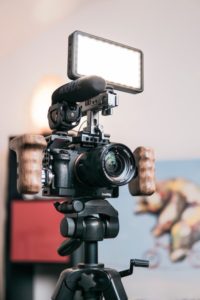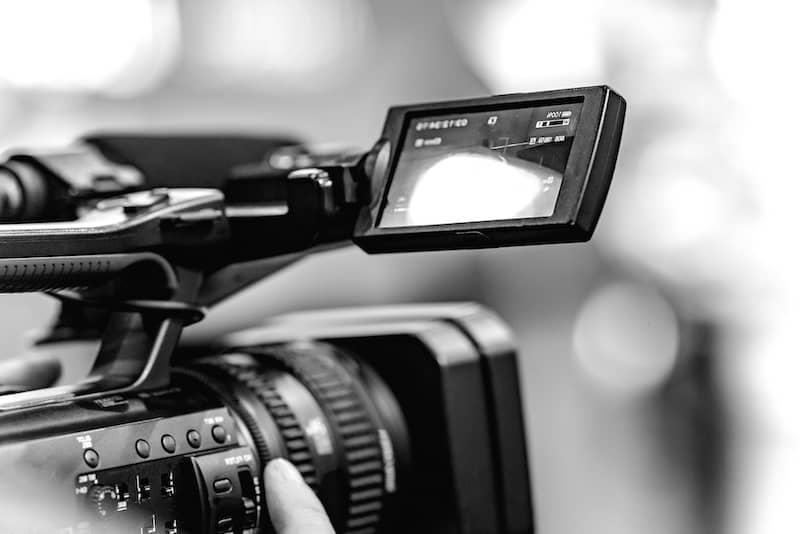
01 Jul Rules for Deposition Videographers: Complete Guide
In every profession there are rules. There are rules of operation and rules of conduct. These rules help guide an individual to be successful in any given field.
Deposition videographers are no exception. This profession is one that must be executed thoroughly and with integrity. Listed below are the basic rules that outline how to be successful and prepared for the job.
Rules for Deposition Videographers
On the record
Being “on the record” means that everything said and done is official evidence that can be used in the legal proceedings. When a deposition begins, the videographer should always begin by stating “on the record.”
While on the record, the videographer should record everything that is being done or said in the proceedings. This is to ensure everything is reported accurately.
Off the record
Being off the record is a request made to be able to discuss something freely without it being on the record. This request has to be accepted by both sides of the proceedings.
Both lawyers have to agree to go off the record before anything can be officially “off the record.” In addition, if one attorney decides that they would like to go back on the record, then the proceedings must go back on the record.
Visual Requirements
When recording a deposition, integrity is very important. Although rules can vary from state to state, the general theme is that content should be unaltered, straight forward, and honest.
When editing deposition videos, there should not be whole portions of the deposition edited out or altered. This is to ensure that everything is recorded and displayed exactly as it happened.
Some states allow several cameras and audio recordings to be present during the deposition. Other states require only one video and audio recording. It is also important that the lighting being used is natural. There shouldn’t be any distracting shadows, harsh lighting, or poor imaging.
The camera should be set up in such a way that every person can be shot from the front without any hinderances. If there are any visual exhibits such as x-rays or charts, the cameras need to have a full view of these items so that there is full clarity of what was presented to the judge.
Audio Requirements
Audio equipment must be just as thorough and authentic for a recording of a deposition.
It is the responsibility of the videographer to ensure the gain on the microphones and the volume are at a sustainable level and that there is no background noise or levels that compromise the integrity of the audio. This is to ensure there is no confusion on what is being said by either party.
Having a deposition video that can be understood and trusted warrants trust in the statements during legal proceedings.
Preparation
Preparation is key when it comes to filming a deposition. It is imperative to show up early and be prepared. The videographer must allow time to set up, validate equipment, ensure quality, and meet standards.
A test recording should be done to test the audio and video on the camera. The videographer needs to allow enough time to record, and then play back the recording so that he or she can make any needed adjustments.
In addition, it is the videographer’s job to ask how many exhibits are being presented during the deposition. This is vital information so that the cameras can be prepared and set up for full coverage of any exhibits presented.
No harsh adjustments can be made during the deposition. This means that everything leading up to the deposition should be thought through and planned out. The only way that can be executed is if everything is prepared and premeditated.
With that in mind, the videographer must prepare all parties for the recording. The attorneys and clients must understand that they are being recorded at all times, how the microphones work, and how on and off the record works in regards to deposition recordings.
Lastly, the videographer has to report the date, time, location, and company on the record before the deposition begins. The videographer must accompany the deposition with what’s called an index.
An index is a timeline of all notable activities during the proceedings. This includes start and end times, times of going off the record, and when the cross-examinations begin. Timestamps are an important piece to consider during a proceeding.
Preparation before the deposition is important. However, it is important to do the research as well. There can be variations of requirements based on the case and/ or state. Research ahead of time to find out what is required or recommended for your state.
It is important for the videographer to know what to bring, who to contact, and who receives the deposition video for examination.
How to Make Your Deposition Videos Go Smoothly
There are many things that you can do to make the depositions you video go smoothly. These are not necessarily rules required to follow by state laws, but are useful to know and put into practice for yours, the deponent’s, and the lawyers’ benefit.
Efficiency is very professional and will put everyone involved at ease.
Showing Up Early
It is important to show up early to the location of the deposition you are filming. There are two reasons for this; one was touched on earlier. You need to allow yourself enough time to set up your equipment and to take a sample video to check the quality of the picture and sound in your recording.
Setting Up Your Equipment
 Your equipment set up is the first step in the process of each deposition video. It is vital to make sure you do it right, so giving yourself ample time to get all your gear in place will help to smooth out the time table for the rest of the deposition.
Your equipment set up is the first step in the process of each deposition video. It is vital to make sure you do it right, so giving yourself ample time to get all your gear in place will help to smooth out the time table for the rest of the deposition.
Testing Your Audio and Video
It is a good practice to test your set up before the deposition officially starts. Clear audio and video lead to the quality and reliability of the deponent’s testimony.
If your equipment set up includes multiple cameras and microphones, this process can take a while. Making sure you get to the deposition location early gives you time to make all adjustments necessary to capture the deposition clearly.
Quiet On Set
Once the deposition begins, you do not want anything to cause a distraction to the deponent and lawyers involved. Make sure movement is kept to a minimum and that any walkways on and around the set are cleared of all obstructions to allow for swift and silent movement to and from your equipment.
Before starting your video, close any doors leading to heavy traffic areas and turn off all fans and space heaters to reduce hum in your recorded audio. This, again, lends to clarity for the viewers of the video, helping to establish trust in what is being said and done within the deposition.
FAQ’s
What Should I Bring?
Other than the basics, such as cameras, microphones, tripods, and cards for video storage, there are a few things that may be necessary for clarity in the deposition video. A few lights are good to keep around to illuminate the deponent in a darker setting. A portable backdrop can help to cut down on distractions behind the deponent in the video as well. You can find the backdrops I recommend here.
Who Do I Report To?
When you show up to the location of any deposition you are scheduled to take a video of, you need to check in with someone to get started setting up your equipment in the correct room.
If the deposition is at a law firm, you need to check in with the office manager or the lawyer involved in the deposition. If it is at a courthouse, the secretary can give you the correct room number or directions to the location the deposition is taking place.
Where Do I Deliver the Video?
Making sure the deposition video gets into the hands of the lawyers involved is a very vital step to the deposition process. There are a few different ways they may request delivery.
If the format requested is a DVD, mailing the disc to the law firm with the name of the lawyer printed on the front of the envelope is the best and most efficient way to deliver it.
If they request a digital copy, sending the file through Dropbox is perfectly acceptable and very efficient. This gives them access to the video as soon as they get the link through an email or instant message.
We hope this article helped you know what to do before, during, and after filming a deposition. Putting these rules into practice helps create trustworthy testimonies for legal proceedings.





